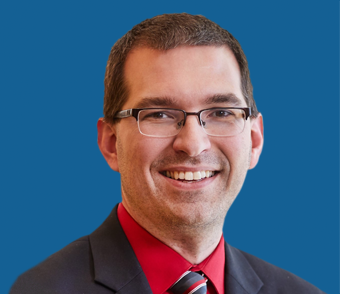Transcript
Vanessa:
Hi everyone and welcome to Visits with Vanessa, a podcast where we speak with home hemodialysis patients, care partners and industry professionals about home dialysis. I’m a dialysis patient myself, I’ve been on dialysis 25 years. I’m also the senior manager of advocacy and communications for Fresenius Medical Care. I have a really special guest today, with a Ph.D. in epidemiology from the University of Minnesota and currently serving as the Vice President Applied Data and Strategy Transformation for Satellite Health Care. He’s also an adjunct professor, what else can I add, at the University of Minnesota. I’m really happy to welcome my friend Eric Weinhandl to the podcast. Welcome, Eric. So good to have you here today.
Eric:
Oh, thanks, Vanessa. It’s wonderful to be here today.
Vanessa:
I’m really excited to speak with you today and find out a little bit more about why you’re so passionate about home dialysis, which I know you are, we’re going to have a great discussion on that and other hot topics such as quality of life and health equity with home dialysis patients. Let’s dig in if we can. My first question for you Eric is actually your role? You’ve got a nice title there at Satellite Health Care, but what is your day to day function and also for some people that might not understand, what is an epidemiologist? If you could just give is a little info there.
Eric:
The best explanation that I can give to people is that for the doctors that you see in a clinic, they’ve been trained to practice medicine for individual patients. They’re caring for one person at a time. Epidemiology is a lot like medicine, except that it is the application of healthcare to populations rather than to individuals. And so my focus tends to be a little bit broader than obviously treating one patient at a time, I don’t have a license to treat anybody, but I do spend a lot of time thinking about what kinds of data we can summarize on a population level to make sense out of what’s going on in our world of dialysis, whether that’s outcomes that people are experiencing or treatment patterns that we’re seeing in the population and home dialysis is one of those things. As far as my current role at satellite health care, I do serve as an epidemiologist at the end of the day. I’ve worked in academic settings, I’ve worked for dialysis providers, device manufacturers, but my role was always kind of similar. I view it as there’s a lot of data collected from people who are on dialysis. We need to make sense out of that data and that requires a little bit in the way of numerical analysis and a lot in the way of storytelling and in trying to help others make sense out of what’s happening.
Vanessa:
Yeah, a lot a lot of different hats you wear, I guess, in a way, right? You’re looking at a lot of data and information you talked a little bit about obviously, you’re looking at data and information about home dialysis. Can you give a little bit of a brief overview of, you know, what that actually is and what options are available for home patients or for patients that might be thinking about home?
Eric:
So home dialysis has gotten a fair bit of attention from all sorts of parties, including the federal government in the last few years, and really concurrent with that attention is just the fact that in this country home dialysis is expanding. Not every country around the world is currently growing home dialysis, particularly with the speed that we are in the United States. So as far as home therapies are concerned, there are actually two different types. The more common form of home dialysis is peritoneal dialysis. That is a type that approximately 15% of patients start dialysis with, and that involves the insertion of a catheter into the abdomen, and then there is an exchange of fluid happening in the peritoneal cavity, and that treatment is occurring on a daily basis, almost always overnight, sometimes during the daytime. And many patients do really well on the therapy, certainly is the more popular of the home therapies around the world and in the U.S.. That said, there is a second type of home dialysis and just as people dialyze on hemodialysis in a dialysis facility or center, you could do hemodialysis at home and that’s what’s called home hemodialysis. Now, the machines that are used for home hemodialysis, of course, are different than the ones that are used in-center. But at the end of the day, it is still hemodialysis and so there is a access to the vasculature so that blood can be pumped out of the body into a dialyzer and the dialysis machine can do its thing. And then the blood is returned to the body. It’s still fundamentally hemodialysis, whether it’s home or in-center.
Vanessa:
So how did you even become an advocate for home dialysis? How did you learn?
Eric:
So my first introduction to home hemodialysis occurred around 2009 or so. At the time, I worked for Hennepin Health Care in Minneapolis, and we did a variety of both federally sponsored research projects as well as industry sponsored research projects. So drug and device manufacturers that approached our research group
asking for help, doing studies typically with databases. And one of those companies was NxStage. This is way back when NxStage was pretty small, pretty little, pretty young. So 2009 would put it about four years after initial FDA clearance of the NxStage System One, and we were just getting to the point in the United States where we actually had a few thousand instead of just a few hundred patients who had experienced home hemodialysis with the NxStage machine. And there was an interest in doing some studies that looked at clinical outcomes. What’s patient survival like? How often are patients being hospitalized? And you know, when I first started doing the studies, I will admit that home hemodialysis was a total revelation to me. So I was one of those people back in 2009 that had no clue that back in the 1960s and 1970s, home hemodialysis was actually really popular, really widespread in the United States. Here is me in 2009 saying what’s this? Once I started getting into the data, you know, I contrasted what I was seeing in the data with a lot of other studies I was doing on a day to day basis which often involve pharmaceutical products, and I thought well you know, the data seem more compelling here than that I often see just the strength of effects, the sorts of things you’re seeing in the data for patterns. Studies are what they are, you sort of want to get to the ground reality and find out what’s really going on with people and not just look at a bunch of databases, but it was about 2011 or 12 that I actually met people from the Medical Education Institute, which is the not for profit based in Madison, Wisconsin and they operate Home Dialysis Central and a variety of other sort of educational tools around home dialysis. That was the gateway where I started meeting home hemodialysis patients. And when I saw what patients on home hemodialysis were experiencing, what they were reporting, and it seemed to be completely in corroboration with data, I thought, wow, this is interesting. Okay, all the pieces are fitting together.
Vanessa:
It really is interesting when you when you think about that, you know, the data and what’s going on in a patient’s life and, you know, how they kind of collaborate. Have you seen HHD improve quality of life of patients? Like in what ways compared to in-center therapy? I think you touched upon how you kind of were looking at that.
Eric:
For the majority of patients who are on in-center dialysis, their dialyzing Monday, Wednesday, Friday or Tuesday, Thursday, Saturday. So they’re visiting the center three times a week and that treatment may go on 3 hours or 4 hours, and, you know, there’s transportation both before and after. And maybe that’s your own or maybe that’s public transportation. So like this is a real schedule. So when you think about this, practically speaking, I mean, you don’t really feel like you can go somewhere else because this is where you need to go with the dialysis centers where you need to go three times. You’ve got a constraint on your schedule and you’ve got to constraint on what you can do with your life in terms of where you can go, right. What home hemodialysis does in terms of quality of life is it eliminates those constraints, at least in a real strict sense. So now you’ve got the opportunity to pick what time of day am I going to dialyze. Obviously, your dialyzing in your home so you don’t need to worry about transportation somewhere. And you know, obviously in consultation with your medical team, you’re deciding how often you’re going to dialyze and that may be, you know, three times or four times a week, or might be five or six times a week. And in particular, with respect to the NxStage device, because it is a device that can be moved around, you can put it in the back of a vehicle, you can take it on an airplane, you’re no longer constrained to being in a physical location. And, you know, when I talk when I talk to patients initially, they would say things like, gosh, I feel so much better. I feel like I felt before I started dialysis. This is after starting home hemodialysis, because of the way I was trained I tend to think about that in terms of like, well, what is dialysis doing to your body? But I think that what people are also saying is that their day-to-day life is what it was like before dialysis. It’s not like this notion of being anchored to a dialysis unit.
Vanessa:
But yet there’s still barriers to get patients home, right? There’s still some challenges or preconceived thoughts that a patient might have. What do you think are those barriers? How do we move patients past the challenge that they might think?
Eric:
I think that one of the biggest barriers that we have with home hemodialysis is simply a lack of awareness, it’s not just on the patient side. So when you go through medical school and then you do a fellowship, you’ve got to learn a lot about kidney disease in two years or maybe three years, depending on where you go. And one of the things you have to learn about is dialysis itself, let alone worrying about home dialysis. So what happens is a lot of people go through their nephrology fellowships and they actually have very little exposure to home dialysis. And so the lost child here is home hemodialysis. There’s a real good chance that your nephrologist is not going to bring up home hemodialysis, not because of any kind of conspiracy against you, but simply because they don’t even have experience with it. So the challenge is how do we get more information? I think that we just need to provide information in as many venues as possible so that patients themselves can hopefully find their ways to that information.
Vanessa:
I think we have an opportunity to do some peer educating and you know, I’m a big fan of that peer to peer. And so peer to peer, I think could probably look like two different things, right. One is learning from a nephrologist who has a successful home program that can then be a champion of home and help talk to other fellows. But I also think it’s always worthwhile to hear from a champion patient, and just talk a little bit about the differences that they felt. And so really finding opportunities for our patients and and their health care teams and fellows, etc., to interact, I think is kind of where we need to be in the future. I’m happy to say that it does seem like we’re doing more of that.
Eric:
Every person who is exposed to the therapy, either a health care professional or a patient, that’s another person who can advocate for the therapy. And to your point, I totally agree that while I can talk about data or nephrologists can talk about their experience, there is like no substitute for a patient saying to another patient, this is what home hemodialysis is like, and this is what it’s done for me in my life.
Vanessa:
There’s a whole other side of it to where I think we should kind of dip into, which is the health equity piece, right. That’s a key a key topic, buzz word, if you will. You know, right now there’s a lot of patients that might be, whether it’s an urban area or even a rural area, communities that that really don’t get touched upon at all about home and it’s really for more reasons than just the nephrologist doesn’t know about it, right. There’s a stigma going on with health equity. What are your thoughts in terms of improving that, but really communicating with the lost patient if you will.
Eric:
Yeah, yeah. That’s a really good question, and I think you’re right that it crosses a lot of different strata. You know, I don’t think that it’s just an urban core problem. I live in Minnesota and in the rural Midwest, it’s rural, obviously, but by definition, but it’s not like we’ve got markets that are just hotbeds of home dialysis.
So it’s not as simple as like, well, home dialysis is doing great in rural America because it isn’t necessarily, it depends on where you are. I think that when it comes to equity issues around access to home dialysis, I think that it can be difficult to find a common theme. But one I would say is that everybody needs to set aside their preconceptions about who can be successful on home dialysis, because I think that that actually provides kind of the rationale for why so many things tend to go off the rails a little. So, you know, you can harbor a view that says people in urban areas live in small apartments and condominiums and they can’t fit home dialysis into their life, or they can’t put the supplies into their space. Okay. So that’s a barrier and you need to set aside that preconception because lots of people in small areas can do home dialysis and we can make it work, we can fit the machine and the supplies in. Another view is these patients are too old, they’re too frail, they can’t do home dialysis by themselves. Well, the reality is that we have lots of people over age 65 who are on home therapies in this country, including people on home hemodialysis. So that’s not true. Can poor people do home hemodialysis? Yes. There is just every barrier that you think of and many come up right that this group of patients can’t do it or this patient group of patients is going to be difficult. I’m not disputing that there are circumstances where things are more difficult, but I would say that in every time somebody brings up a barrier, I could point out a patient who’s been successful, and so it’s still possible.
Vanessa:
With these preconceived notions of you can’t do it because you have a small space or you’re older or you don’t have help or whatever it is, you’re taking away, in my mind as a patient, you’re taking away that opportunity, right? Like, if I don’t even know that that is an option, let me as a patient, figure that out and work with my health care team to see are their creative solutions that we can do. Can I have delivery every other week? Is there a family member that might be able to help me? Like, don’t take away the choice by just automatically thinking that it’s a no. Right? I think it’s a conversation that you need to have with the patient and by the way their family as it’s not a one and done, and you might not even need them. And so that that’s important as well.
Eric:
If you feel like you’re getting a little bit of resistance from one person on your health care team, talk to somebody else on your health care team. And sometimes you might just be talking to the one person on your team who is not totally into it. So it’s important to find a champion who is going to be your ally, right? If you want to do home dialysis, I can assure you that somewhere in your circle of five or ten people, there’s somebody who will help make it happen for you
Vanessa:
Are there policy changes that you think could help us in the future that might support a patient? And if so, you know, what do you think they are?
Eric:
Challenging question to answer because the policy landscape is always shifting. Ten or 15 years ago, there was a temptation to say everybody in dialysis has traditional Medicare coverage. What that means is, if Medicare can’t do something, we need to talk to our congressional representatives and get a piece of legislation that authorizes something new that Medicare can cover. To pick out one specific thing that we don’t have in the U.S. that would be a good policy advancement that still must go through Medicare is staff assisted home dialysis. And this is an area in which the United States is a real outlier compared to a lot of other countries in not just Canada, but also Western Europe. And the clearest example of how that has an effect on home dialysis is when you look at the use in the elderly population between here in the United States and in Canada. We have many fewer patients over age 65 on home dialysis than the Canadians do. And part of it is because the Canadians cover staff assisted home dialysis and we don’t. Now staff assisted can take many different forms, right. It doesn’t have to be a full care, somebody coming into your home and doing everything about the dialysis procedure. It can be a step down from that like temporary care, or assistance with part of the dialysis procedure like set up but not tear down. But if we had it, I think it would help, right. It would be another tool that we can use to help grow home dialysis. Now, aside from that, I think that the other issue that people need to think about is that we have a lot of people who are now enrolling in Medicare Advantage plans. But the nature of Medicare Advantage from a policy perspective is that the government is saying to basically private insurance companies, we’re going to have you administer the Medicare benefit, so you guys set up the design of the benefit, the coverage, and the payments, and all that kind of stuff, we’re going to stay out of the weeds. And as a result, I think that a lot of the ingenuity that’s going to need to happen around home dialysis in this decade is actually going to come from conversations with insurance companies rather than with CMS as it exists in Washington, D.C. and Baltimore. And that’s going to be a little bit different because it means that we actually have to work on policy solutions with multiple different companies, right. And so maybe one insurance company says, yeah, we really want to try a staff assisted, or a different company says we’re really interested in promoting nocturnal hemodialysis and we’re going to have, you know, solutions and devices that help to make that happen. So I think that there’s a lot of possibilities for things to blossom here, but it’s going to be more complex and it’s going to require a little bit more thoughtfulness than maybe sort of the single-minded tunnel vision approach it did to policy in the last ten years.
Vanessa:
I agree with you that there can be different kinds of programs of staff assist. You know, it might be when you’re first starting you need a little more support, and then there’s a step-down program, and might be somebody that just needs somebody to, you know, come in and organize and get boxes moved and things like that. So there’s a lot of different avenues there. Particularly interesting to me is kind of this insurance view that you’re looking at. I feel like that’s really interesting for patients too, just to think about like where they are in the future. What would it be? Right.
Eric:
It’s important to ask them questions like say, you know, if I signed up for this plan, what implications or things does it have for me as a person on dialysis? What does the coverage policy do pertaining to home dialysis? How does it pertain to access to transplant centers that I’m interested in? Like, these are really specific questions and I think it’s important to ask them because it could very well be the case that one company and another company are very different, even though the premium is the same.
Vanessa:
Right and patients need guidance on that right? They need to do that and they definitely can work with their social worker. I mean, your health care team, like this is where you work with your social worker to outline some of those questions and think about what you’ll be asking, they also have a lot of information for that as well, but it is a good time to kind of explore and educate yourself because there are a lot of, there is a lot of information out there, you have to learn kind of where to find the information, and don’t be afraid to ask for that information. So Eric, as we wrap it up here, you gave such, you know, really good information from data to health equity to really even just talking about policy in general. What’s the one piece of advice, though, that you would give to patients now? So we have a lot of patient that listen to our podcast, some of them are currently on therapy, and some are just exploring and wanting to learn more information. What advice would you give to them in terms of home hemodialysis that would be a good option? What would you say to them if there was one little piece of advice that you give.
Eric:
The biggest thing I would say is just remember that before you had kidney failure, your kidneys were running 168 hours a week, 24 hours a day, seven days a week. Dialysis is a substitute for those kidneys. But we can’t do dialysis 168 hours a week. So the question is, what amount of dialysis do you need to get you closer to where you were before your kidneys failed? And I would say that one of the most important things to remember about home hemodialysis is that it provides the opportunity to dialyze more frequently. And so you can dialyze four times or five times in a week, or maybe you dialyze overnight, so the total number of hours per week is more than you would be getting in-center. The second part, I just would add, I know you only asked for one, the second part I would just add is it’s always worthwhile to try, you’re never picking one modality for the rest of your life. Okay, you can try home hemodialysis, so give it a try, if it doesn’t turn out, you can pick something else, you can go in-center, or you could try PD. Remember that there is value in just trying, because you’re never making a permanent choice.
Vanessa:
You know, I’ve been on dialysis I said at the beginning of the podcast, 25 years. I’m not the same person I was 25 years ago and your needs change as well. It can be time for a change. You can work with your health care team to decide, maybe I want to do this nocturnally overnight. It’s something that can evolve and change over time or even just at the beginning, finding that right space.
Eric:
Dialysis is not just for failing kidneys, it’s actually for your entire kidney and cardiovascular part of your body. And so, like, there are needs that are going to change over the course of time and that’s that’s medicine, that’s the way it works with anything.
Vanessa:
Yeah it is more than just kidney, I’m glad you mentioned that, right. It is a whole all your organs, like everything works together right, so finding kind of what is right for you is really going to be important and working with your health care team to do that is really the best option. Eric, first of all loved having you, thank you for joining me here today. I mean, sharing your knowledge, clearly, your passion, I feel like you and I need to have another talk really just on policy, that could go for a long time. Really thank you for joining us here today.
Eric:
Well, you’re welcome. Thanks for having me today.
Vanessa:
To our listeners, if you have questions and you want to learn more about home hemodialysis, please feel free to call one of our Patient Consultants. You can reach them at 1-888-200-6456, or you can go to NxStage.com. All of our Patient Consultants are current or former dialysis patients and they really look forward to speaking to you. Like I said, there’s nothing better than speaking with a peer. It’s important to note that not all patients are going to experience these benefits. I look forward to having everyone join us again on our next episode of Visit with Vanessa.













